'We don’t rise to the level of our expectations, we fall to the level of our training.' – Archilochos
In early 2018, Combat Team ‘Bandit’ (based on Bravo Company, 1st Battalion, The Royal Australian Regiment) participated in the Combat Training Centre Warfighter Exercise (CTC WFX), which featured some of the most demanding and realistic training Army provides. While not exhaustive or particularly revelatory, my hope is that the following modest reflections on this activity, and of the ‘READY’ cycle broadly, provide some insight to team leaders and combined arms practitioners in the future, whether deployed on a WFX or on operations.
The plan is nothing; planning is everything. 'No plan survives h-hour.' At all levels, the commander must ensure contingencies are developed (in the form of branches, sequels, and ‘actions-on’) with clear triggers and decision points identified, based on detailed planning. This planning develops information requirements, indicators, warnings and areas of interest (among others) as the tools that help you synchronise the operation and counter the unexpected. The more detail, the better - and rehearse it. Planning in detail doesn’t reduce a subordinate’s freedom of action – it empowers it, as it generates shared understanding and nesting of the holistic plan. Concept of operations (CONOPS) back-briefs are essential. They confirm the commander’s intent and hold subordinate commanders accountable for their own planning. It is useful to have the subordinate commander offer their target for rehearsals in their back-brief. It is common for the more inexperienced junior leaders to rehearse routine actions or events that are within their standard operating procedures (SOP). The back-brief is the tool to ensure the subordinate force is rehearsing their identified points of friction and developing relevant contingencies that align with the overall plan.
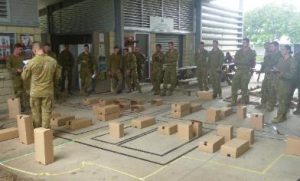
Collegiate planning has its place. It should be used sparingly at Combat Team level. Pre-deployment, I intended to use Mission 1 as a training opportunity for platoon commanders and provide exposure to the deliberate planning process at combat team (CT) level. Time was simply not available for the investment that this endeavour deserved. The course of action development (COA-D) lacked sufficient detail, which meant a COA was not ready for the wargame. By the time I had revised a feasible COA, it was time for CT orders, which were also under-developed. Later, when preparing for Mission 2, the planning team was consolidated to include only the Commander, Executive Officer, Sergeant-Major, Forward Observer (FO) and relevant specialists (Engineer Liaison, Protected Mobility Troop Commander, Tank Troop Commander), which saw significant improvement in the quality of the plan and orders.
Minutes matter – mastery in battlecraft generates time and space.[1] Mastery in basic soldier skills set the conditions for tactical success. Instinctive and efficient battle drills ‘buy time’ for commanders to conduct post-h hour analysis and make measured decisions. In the absence of such skills, junior commanders are drawn into micro-managing their team’s initial reaction to an incident. This gifts the enemy time to make that crucial decision that could unhinge your design for battle before you have fully comprehended the situation. These drills are predicated on training in ‘the big 4’: superior battlefield fitness; small team tactics, techniques and procedures (TTPs); night-fighting skills; and battlefield shooting. Though all of these skillsets are tested on a WFX, shooting proficiency is uniquely apparent on a WFX through the use of laser and GPS instrumentation, affording force-on-force feedback on a large scale.
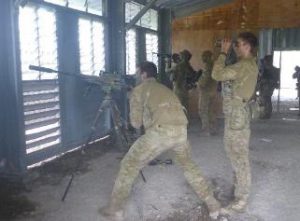
Situational awareness needs to be fought for. It is nearly impossible for a commander to make timely and informed decisions without sufficient situational awareness (SA). SA is gained through ‘fighting for communications’ and by finding and fighting the enemy.[2] Commanders at all levels would prefer not to be prompted for reports from their headquarters, particularly at moments of friction. They can limit this intrusion by pushing information to their commander or headquarters regularly at moments of their choosing. Consolidated ‘reverse situation reports (SITREPs)’ should be routinely broadcast to subordinate call-signs to remove information silos and create a shared awareness of the wider situation. This is predicated on a well-drilled command post, but takes only minutes and is a vital precondition for enabling mission command.[3]
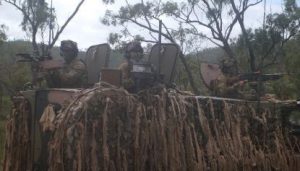
Offensive action and mindset sets the conditions for achieving decisive events. A passive defensive posture is unlikely to yield decisive success. Sometimes, being harassed by unanswered enemy fire throughout the night will only embolden a determined enemy. Depending on the situation, a queued force element (FE) that is tasked with interdiction can solve many problems. Saturation of the area of operations (AO) can limit the enemy’s freedom of action and shape him into a defensive posture, setting the conditions for decisive action. In general, your decisive events (DE) should be enemy-centric and include mechanisms for his defeat.[4] If your DEs are simply a list of ‘blue-centric’ essential tasks, then your operation is not effectively targeting the enemy, nor is it giving you scope to develop distinguishable COAs. Additionally, your DEs should be more than a ‘list’ within your method; they should also describe the means by which the enemy will be defeated through their application.
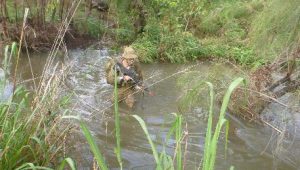
Enabling activities require the same effort and attention as the decisive tactical actions. While the action on the tactical objective is critical and worthy of the greatest investment in planning, there are a number of enabling actions that cannot be overlooked. For example, an airmobile insertion is a deliberate tactical action that requires detailed planning, coordination and synchronisation in order to set the conditions for follow-on operations – it cannot be an afterthought, but rather is a considered and detailed phase in the overall plan. Rehearse the bump plan, equipment stowage, and the layout of the pickup zone and landing zone (LZ). Visualise and wargame the occupation of the assembly area that will be in the dark or in the rain, under enemy observation and dislocated from the LZ. Similarly, a battlefield resupply is an essential operation that calls for detailed planning, contingencies and security; the combat team is immobilised without it. Consider the resources and the appropriate personnel to plan and execute a task like this. Other operations may need to be paused to ensure its success.
The Battlefield Clearance Team is essential. Some misguidedly believe that the casualty should be prioritised over achievement of the tactical mission. The Battlefield Clearance Team (BCT) is an indispensable tactical grouping that gives commanders assurance that their combat power is being preserved, and not being redirected to casualty management and backload. Importantly, it provides soldiers assurance that their mates will be cared for behind them, allowing them to commit to the task ahead of them. The construct and manning of the BCT should be carefully considered and generated based on the requirements of the mission; it might consist of military police, medical technicians, stretcher-bearers, engineer search or decontamination capabilities, a Company Intelligence Support Team, or the A1 echelon.
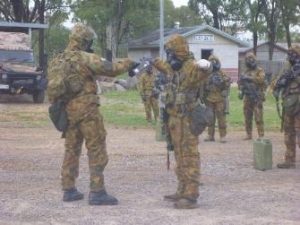
Battlefield leadership and initiative by our junior leaders is very good. Post h-hour, junior leadership was consistently exceptional. The ‘road to war’ and the ‘READYING’ phase of the force generation cycle offers unrivalled opportunity to develop combat leadership. However, one should not undervalue those opportunities inherent in the ‘READY’ and ‘RESET’ phases; they offer unique leadership and small-team challenges in the absence of larger collective training activities, and often provide the ability for leaders to ‘step up’ into positions of additional responsibility and conduct training of their own design. While balancing the requirements for non-platform support tasks, this opportunity should be exploited.
Tactical lexicon requires practice and understanding. Ongoing education is required to ensure leaders intuitively understand task verbs and how they are nested. For example, ‘SUPPRESS and ‘ISOLATE’ are fundamentally different tactical effects that were misapplied. We have seen a swathe of new words and colloquialisms with unclear meaning creep into everyday lexicon, such as ‘ISR Soak’ (instead of simply ‘ISR’ (intelligence, surveillance & reconnaissance)), or ‘squirters’ (instead of ‘withdrawing personnel’). Describing a combat team attack as ‘kinetic’ is banal and unnecessary. This overuse of trite or idiomatic terminology may be an attempt to sound shrewd, but I suspect it is simply because the correct doctrinal vocabulary is not practiced with enough regularity, nor understood and espoused by some commanders and trainers at various levels.
Forming teams and building ‘team culture’ takes time and effort. Combat-teaming is an investment, though it will often be thrust upon the commander at short notice for a specific task. We targeted our short time-frame and reduced battle procedure window through modest but meaningful methods; we attempted to create a shared identity, designating the collective call-sign 'BANDIT' (vice 'BRAVO'), demonstrating a combat team was formed and not simply augmented. We also referred to our combined arms team-mates as ‘specialists’, not ‘attachments’, acknowledging that they brought something unique, complementary and critical to our success.
Conclusion. This collection of observations is not exhaustive, nor, I suspect, particularly ground-breaking. It is also only indicative of the specific experience and mission-set that the Combat Team underwent on the Warfighter Exercise, under the tutelage of the Combat Training Centre, and excludes a wide range of other important lessons learned on additional collective training evolutions since. My hope is that some of these observations will be of utility, particularly among those who are expected to plan for, and/or lead, combined arms teams in the collective training opportunities the ‘READYING’ and ‘READY’ phases provide.

Click here to download a printable copy of these reflections.
In Part 2, the 2IC of Bravo Company will offer his reflections on Combat Team command and control.
In Part 3, the Sergeant Major of Bravo Company will offer his reflections on the Battlefield Clearance Team, in concept and practice.









